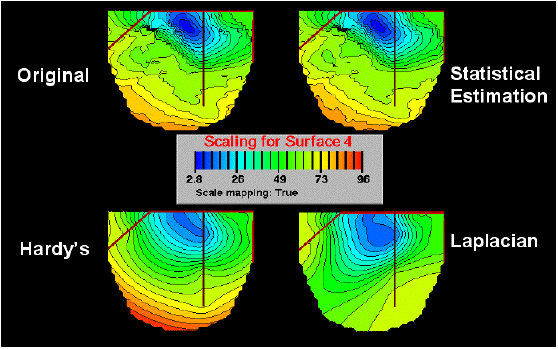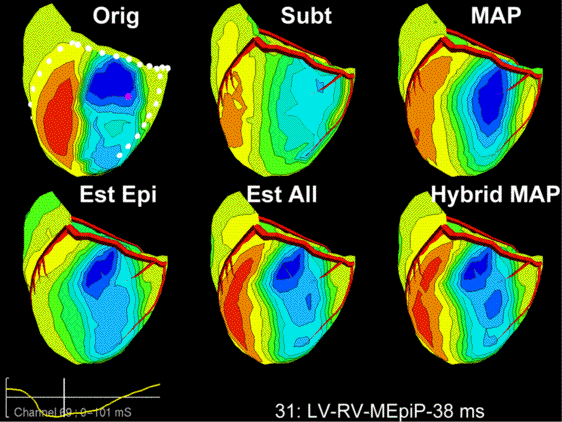Estimation of Cardiac Activation
The broad goal of all electrocardiographic examination is to reveal
information about the heart from whatever sources of electrical information
are available and using whatever methods of interpreting the measured
signals which may be appropriate. By combining both measurement and
interpretation modalities, it may be possible to substantially improve overall
information content and diagnostic performance. For example, clinicians
already combine body-surface electrocardiograms (ECGs) with catheter
based electrical measurements to improve localization of ectopic activation
or reentrant arrhythmia.
Recent advances in catheter technology allow the use of multiple venous
catheters, each containing up to 16 electrodes, to map regions of the
epicardial surface of the heart. In previous studies, we showed that
signals from such catheters were equivalent to those recorded from nearby
sites on the heart surface\cite{RSM:Kue98,RSM:Kue99} and that it was also
possible to estimate high resolution activation maps of the complete
epicardium from a sparse set of venous catheter measurements. The figure
below shows an example of these results for a beat paced from the
epicardium of the left ventricle.
|

|
| Interpolation versus estimation for reconstructing activation maps.
All values are activation times.
|
Here one can see a comparison of different interpolation techniques and our
estimation approach in reconstructing the activation sequence from a heart
beat. The estimation is based on measurements just along the red lines
visible in the image--we interpolated ot estimated all the values between
the lines.
We have recently, together with Dana Brooks at Northeastern University,
begun to combine estimation with inverse solution approaches to
reconstruction not activation but the electric potentials on the surface
of the heart.
|

|
| Combination of estimation and inverse solution for reconstructing
heart potentials. All values are epicardial voltages.
|
The figure shows some of our first results for a range of different
approaches to both aspects of the solution method.
Last modified: Wed Sep 11 19:37:04 MD 2002